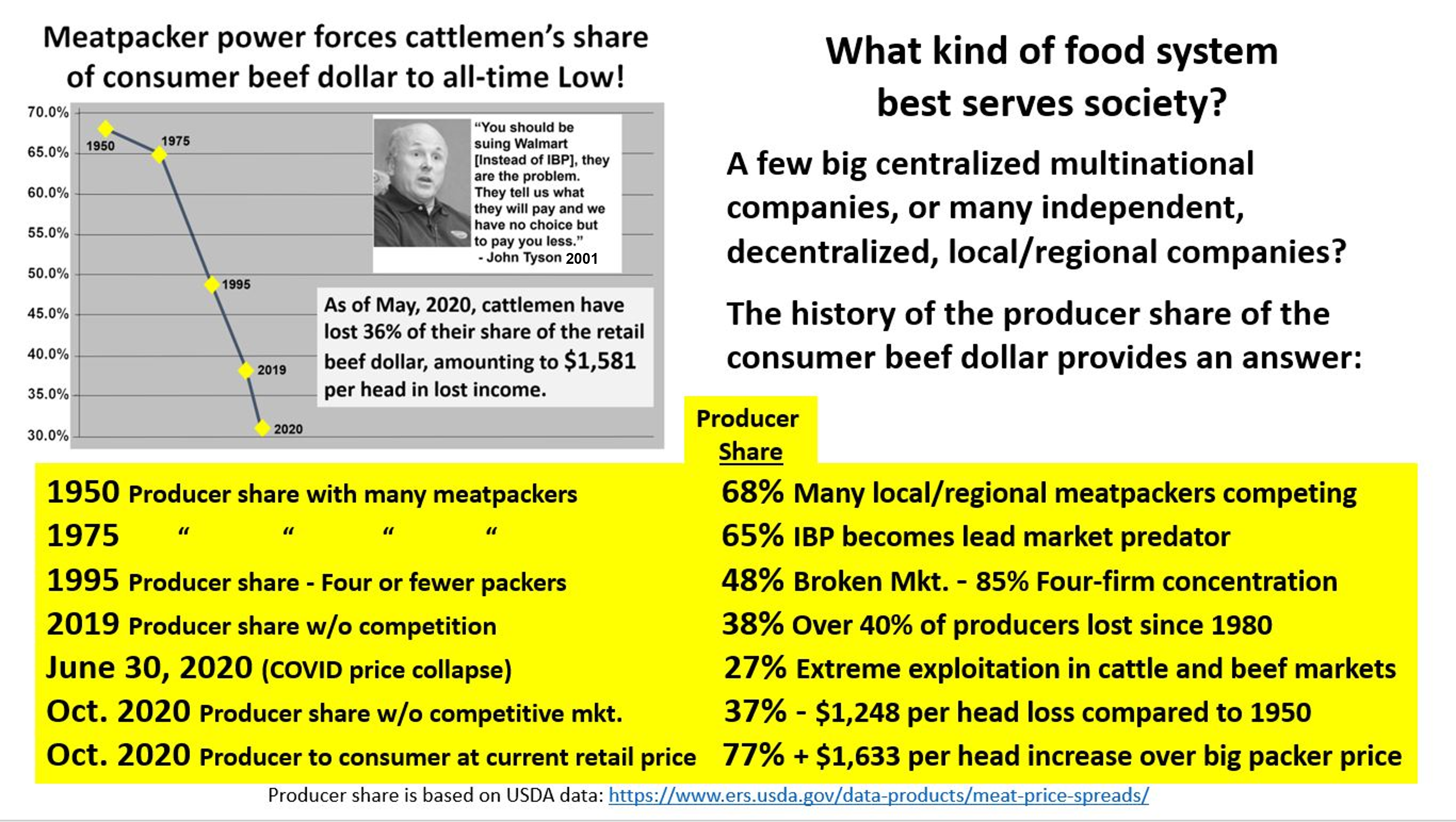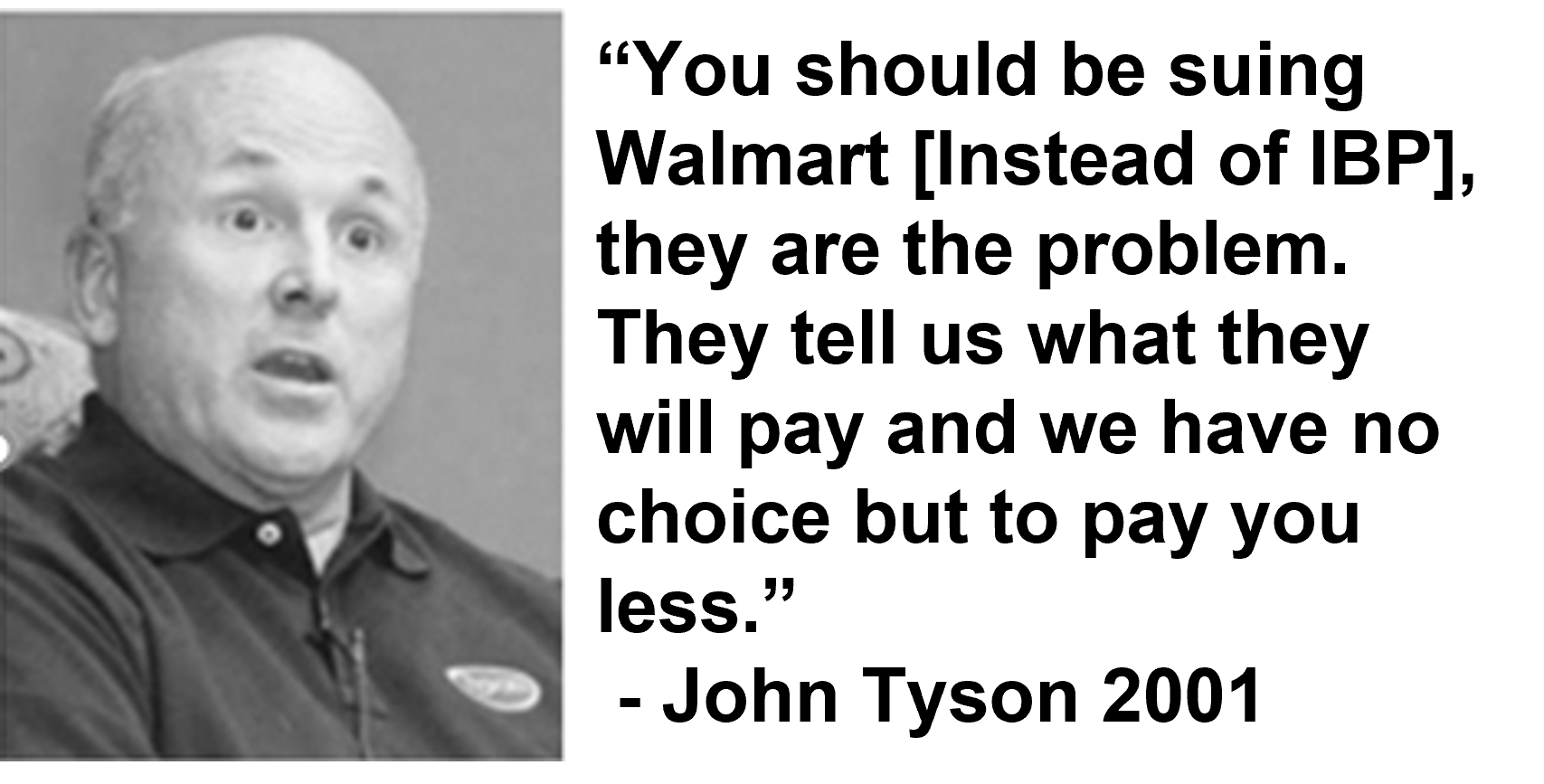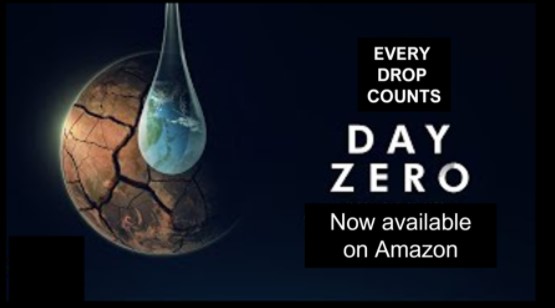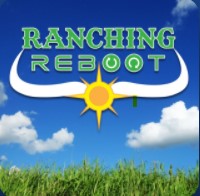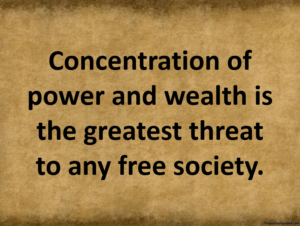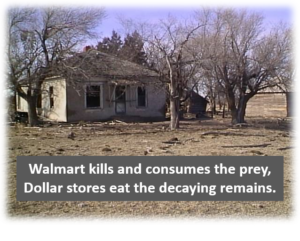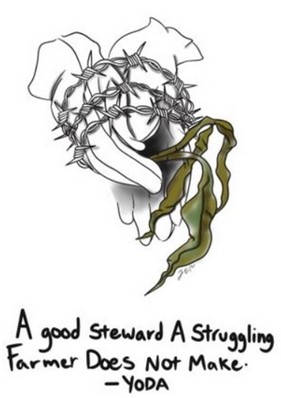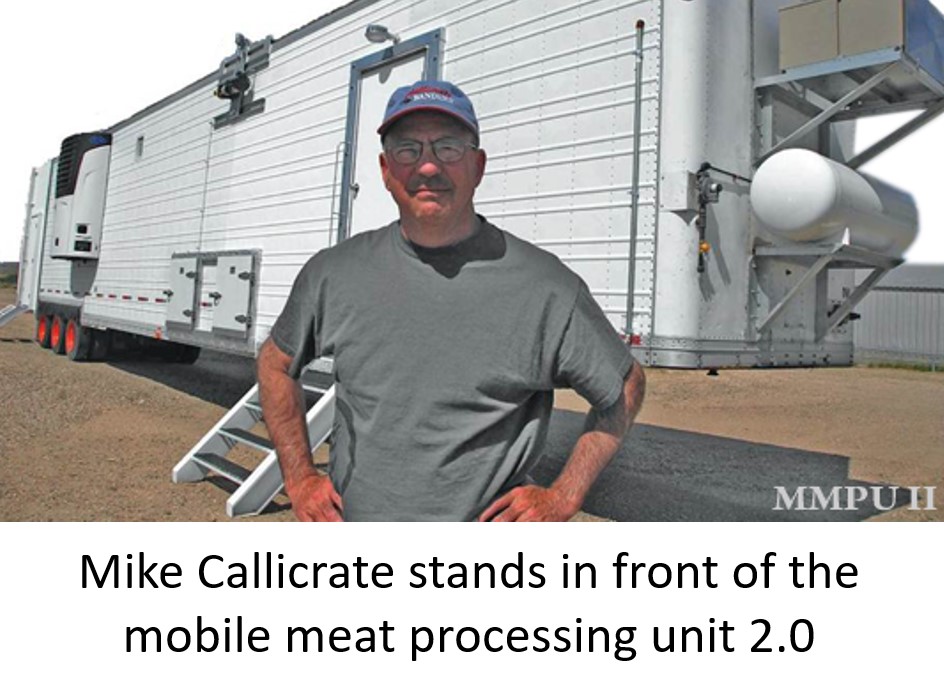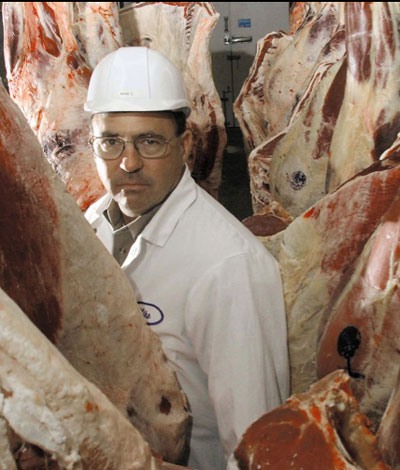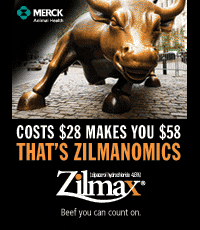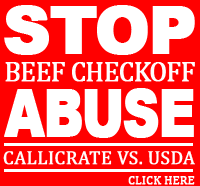Retailers are robbing the bank and the meatpackers are driving the getaway car.
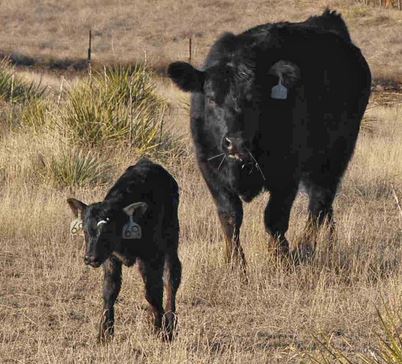
Cattle producers feed us, provide care for our animals, and good stewardship for our nation’s land, but only if they are allowed a fair share of the consumer dollar.
Key to the growth of the current meat monopoly has been the worship of bigger-is-better, and the misguided belief in the concept of economies of scale and efficiency. Corrupt and fearful lawmakers and lawmen, assisted by captured producer groups and university economists, have cleared and guarded the way, bowing to political and money power as the many firms became the few and the few became the ag and food monopolies of today that prey on the public.
“Monopoly is Tyranny”
With the government’s permission, the biggest players merged, bought out, and eliminated weaker rivals. Then, with so few companies remaining, they cooperated to manage the market in their favor, paying executives, shareholders, lobbyists, and bribes to members of Congress instead of producers and workers. Predictably, we now have bankrupting cattle prices, lower pay for workers, dangerous working conditions, a tired and strip-mined heartland, bare grocery shelves, and far fewer choices for consumers.
In the mid-1970s, when I entered the cattle business, there were many sellers and many buyers for livestock. The market was competitive, the industry was resilient and sustainable. The competitive market efficiently allocated 65% of the consumer beef dollar back to the producer. All sectors from ranch to retail, if well managed, could be profitable. Rural communities were alive with living incomes, water was drinkable, and the air was breathable.
How much are they stealin’?
Today, efficiency is a measure of how much the meatpacker/retailer cartel can steal. 31% more of the consumer dollar is going into the cartel’s pockets than a 1970s competitive market allowed. 31% of the current $4,026 retail value for the average finished steer or heifer equals $1,248 per head loss to the producer. With an annual cattle slaughter of 33 million head, the cattle industry is suffering a $41 billion annual loss. Instead of protecting the producer from anti-competitive practices, as the law intends, Ag Secretary, Sonny Perdue, on his way out, has rewritten the already pathetically weak rules giving meatpackers permission to steal even more.
Tyson/IBP, JBS, and Cargill cooperate with the major food retailers to control prices for cattle and beef.
When we lose our markets, we lose our freedom.
What if producers, instead of selling cattle to the big meatpackers, could market their beef directly to consumers? What if the consumer could buy higher quality, safer, locally produced beef at essentially the same prices they currently pay at the big box stores, keeping the money closer to home? What would be the impact on producers, workers, animal welfare, rural communities, and the environment?
What would rural America look like if competition could be restored and an additional $41 billion a year, just from the cattle industry alone, was circulated through our rural communities? What if, right now, we began building a new local/regional, small-to-medium-size, meat plant infrastructure parallel to the existing system, eventually replacing it, bringing the producer and consumer nearer to each other?
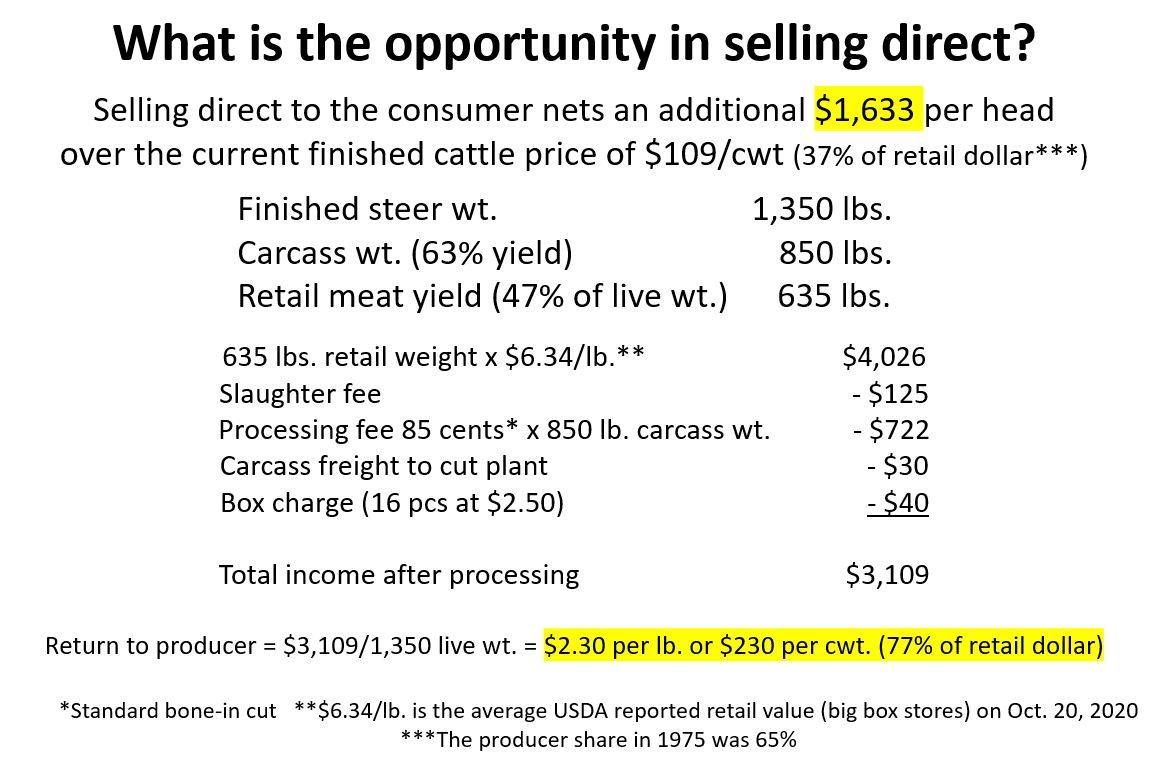 Note: The Current USDA reported Byproduct Drop Value of $123.79/head ($8.90/100 pounds live wt (1,391 lbs.)). for the hide, head, heart, liver, tongue, tail, etc.) is not included in the above calculation because small plants generally receive little to no value for the Drop (Offal). Many small plants are now composting or paying for the removal of slaughter waste, including the hides. Twenty years ago when I started Ranch Foods Direct the Drop Value credits were worth more than the kill cost.
Note: The Current USDA reported Byproduct Drop Value of $123.79/head ($8.90/100 pounds live wt (1,391 lbs.)). for the hide, head, heart, liver, tongue, tail, etc.) is not included in the above calculation because small plants generally receive little to no value for the Drop (Offal). Many small plants are now composting or paying for the removal of slaughter waste, including the hides. Twenty years ago when I started Ranch Foods Direct the Drop Value credits were worth more than the kill cost.
Throwing away perfectly good hides represents just another failure of the highly concentrated, centrally planned global meat industry – it’s wasteful and is disrespectful of the animal.
Stop the Stealin’ – Break em’ up and Build Back Better!

